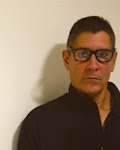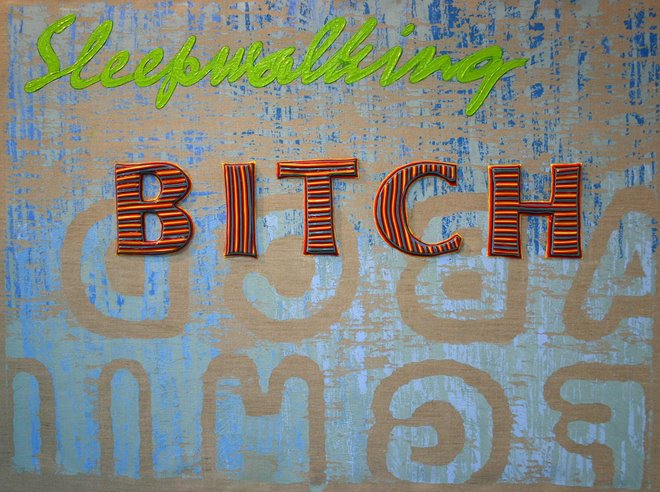

Bronson, the recent British arthouse film, is a fictionalized account of the UK’s most notorious prisoner who has - willfully, and to little apparent profit (except for becoming certifiably sui generis) - lived 34 years inside British prisons. Thirty years of that time was passed in solitary confinement. Bronson, the man and the film, reminded me, yet again of the anomalous nature of a studio artist’s working life.
Solitary. How many gainfully employed people spend the biggest portion of their working life alone? Monks, bakers, drawbridge operators, night watchmen – to name a few fellow travelers. Monks practice, bakers make, drawbridge operators wait, night watchmen watch the clock. Artists wait, practice, make and watch the clock.
A night watchman observes the clock with anticipation…the artist with dread. The watchman anticipates his timed rounds and liberation from a prescribed period of wage-slavery, but, conversely, the artist works in fear of a clock-compelled return to life’s incessant (and often legitimate) demands.
If an artist chronically (as calibrated by the clock) capitulates to life’s demands there will be no studio time. If one finds it impossible to displace life’s demands with the demands of studio practice one is an artist in name only. A lifestyler. These are old-school equations. There’s plenty of art being made these, and in former, days…sans studio. But that’s another story. One I’m not much interested in being a part of – or telling, from inexperience, about.
Studio practice may be incompletely characterized by what it does to time and what time does to practitioner. Or, rather, the practitioner’s perception of time. One typically enters the studio harried by life. Hectored by its demands. Hounded by its to-do lists. A to-do list - the only verifiable perpetual-motion-machine known to mankind.
Shedding, shrugging off, slipping fetter, evading, end-running, and entering into delayed payment contracts with life’s demands takes time. Ironically enough, studio time. The bit of time you’ve lost negotiating your freedom pays neither piper nor muse. When that negotiation’s wrapped up the artists gets to work. In both senses of the trope.
There’s more… gearing up. Before really getting down to work there is: unwrapping, replenishing, situating, and finally the job of slipping fitfully from the segmented flatworm fluctuations of real-world time into the slippery, attenuated, sidereal,
time-signature of the studio.
Finally, dear god, finally… absorption. The same sort of task absorption enjoyed by readers, diamond-cutters and lovers. In that state of utter absorption time compresses on the outside and unreels on the inside.
It’s what’s responsible for the ability of baseball batters to lazily (and elegantly when slowed down on film) hit 100 mile per hour fast pitches. Evidentiary accomplishments that grow out of that state and the state itself are both addictive. The accomplishments, because they appear to be replicable anomalies, addict by seeming to be serial, quotidian, real-time miracles – and you, the putative miracle summoner, feel, for fleeting moments, like uber-mensch. The absorptive state itself – as any mountain hermit will tell you – is (or should, as prescribed by hosts of metaphysical maxims) be an end in and of itself. In the contemplative space of the studio one goes from being a precocious bliss-ninny (in first-blush-romance with solitude) to a (following decades-of-studio life) hardened veteran (man of the thousand mile gaze) looking-for nothing more, and nothing less, than more-of-the-same.
The longer one is in the studio (meaning cumulatively) the more the dark art of ‘associative seduko’ (for wont of a better descriptor) seduces one’s perceptual apparatus and becomes an inescapable, default, part of one’s 24-hour deductive mechanism. Although not much required outside of studio-proper, the association-finding mechanism continues to perpetually locate, compare and sort. Industriously sorting one’s ongoing experience of the world into categorical piles – well beyond what’s necessary to negotiate life’s dilemmas and opportunities. The perceptual clockwork I’m speculatively attempting to identify, label and catalogue is the same mechanism (on the extreme end of its own behavioral spectrum) that informs the worldview of pathologic paranoiacs. Everything fucking connects! Even the less extreme manifestations of this associative spring-trap can be a nuisance …getting in the way with ‘too much information’ when trying to conduct one’s simple, daily, real-world business.
The woman working the retail checkout resembles something in one of the artist’s categorical ‘piles’ and so, associations arising from that particular pile, attach themselves to what would otherwise be a simple transaction. Involuntary linkages find the artist reading situations for something they, in retrospect, most certainly were not – that is, if hard fact, rather than infinitely reverberating association, may be wholly relied on. Association, a skill and mindset that simultaneously simplifies and enriches studio life, needlessly complicates and impoverishes one’s life outside by robbing quotidian experience of its unembroidered immediacy.
Thus, in the long run, life in the studio appears, to the hoary practitioner, to be an existence more easily read and reliably acted upon than regular life outside. At this point, given the financial (‘time is money’) and physical (health is time) wherewithal the artist will more and more repair to the studio - studio as redoubt against and sanctuary from besieging routine and the associatively organized (thus uncomfortably predictable and unbearably tedious) vagaries of everyday, non-studio, fortune.

